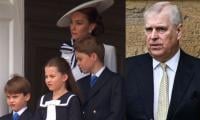Karachi : To give nature and environment a formidable voice is a challenging notion and an idea that may or may not play out well with an audience that has become accustomed to watching adaptations of plays written by foreign playwrights.
But it can be done. The River’s Daughter ran with this premise and came out the other side with a lasting and profound imprint on anyone who did catch a show. Staged at NAPA (National Academy of Performing Arts) in Karachi, the play was first written in English by Arieb Azhar and translated to Urdu and Sindhi in pristine fashion by Nasir Ahmed.
Loosely adapted from Shah Lateef’s classic folktale characters - Umar and Marui - it presents them in a modern-day context, giving it a layer that would and did resonate with people.In essence, the love story is centered around Marui, a modern-day woman, who comes from the river community and Umar, a man who is designing a real-estate project next to the village to be called River Front Urban Project. Umar is the director of that project. At the same time, no matter what Umar tries in his effort to woo Marui, she confesses that her love for the soil, for the river and the open skies would always remain and no other love could replace its intensity.
Amna Ilyas in the role of Marui is ethereal. She carries the theatre production on her shoulders, even nailing the accent in what was her first theatre performance.
Meanwhile, the more experienced theatre-actor Fawad Khan as Umar was inconsistent and unconvincing. His character swung like a pendulum and landed as an unintentionally funny protagonist of the two.Fortunately, the supporting cast transports the audiences to Bhullan gaon (Dolphin village), where the river is drying, the fish are dying and agriculture is no longer a means of livelihood.
The soul of the play, though, was its Sindhi music, composed and sung by the Mai Nimani troupe from Tando Adam.
The River’s Daughter is a much-needed wake up call for original scriptwriting vs. adaptation of works. It is a welcome change and is a force to reckon with when it comes to adapting our own cultural heritage and folklore for the stage. The play rejects mainstream narratives hyper focused on human relationships and instead gives voice to a story about places, spaces, things, objects, animals, creatures, colours, flora, fauna and magic. A message of colonization’s roots and its stranglehold on us as a people is among its themes. It is also an allegorical reference to what the rich do to become richer and it spells out what development actually means: ‘Tarraqi dharti baich kar agay barhne ka naam nahi, tarraqi dharti sambhal kar aagay barhne ka naam hai!’ (Progress doesn’t mean selling out your land, real progress means protecting your land and the environment!)















